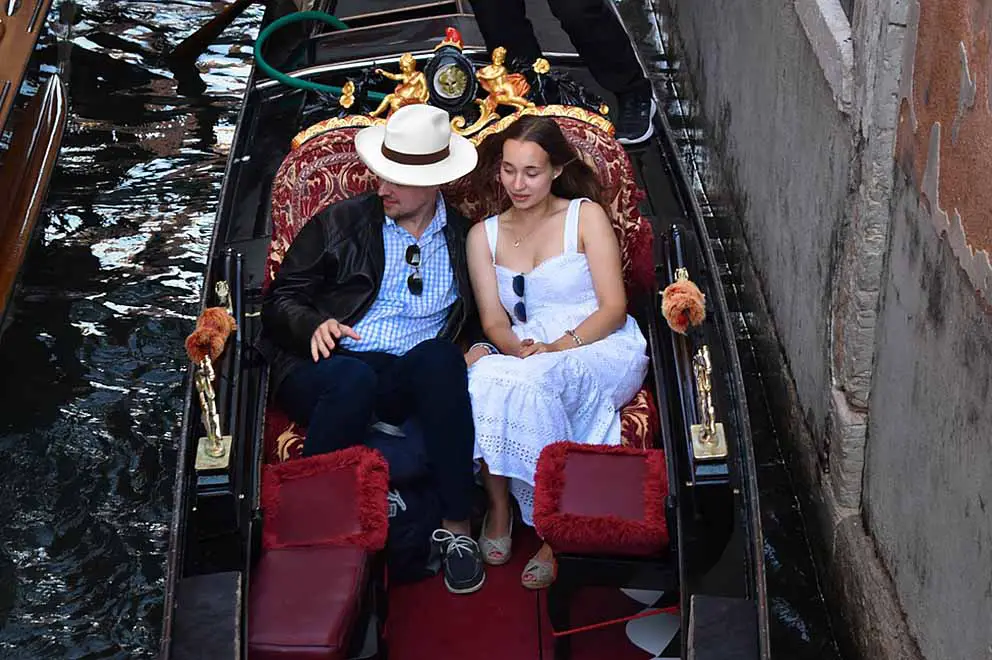The Italian language has many nuances. As you might know, Italians speak many dialects. Plus, each region has its own way of phrasing words of greeting and adieu in a sentence. So, it is worth learning how to say goodbye in Italian to avoid ruining an otherwise perfect conversation.
These days, virtually everybody uses the word “Ciao.” And if you have been learning Italian, you might also know the word “Salve,” which is a formal greeting you use with someone you never met. Ciao is a colloquial term Italians use to greet friends and family members alike. But you can still use it in a business setting or store as long as you smile. But there are other expressions as well. And they can be more apt, depending on the situation.
Table of Contents
- Why Learn How To Say Goodbye In Italian First
- Formal Ways To Say Goodbye In Italian
- Informal Ways To Say Goodbye In Italian
- How to say Goodbye in Italian and wish a safe trip
- How do you say Goodbye in Italian when Leaving For Good
Why Learn How To Say Goodbye In Italian First
While there are many ways to start a conversation in Italian, a greeting is not always necessary. But you should always say goodbye when leaving. Unlike other populations, most Italians are pretty touchy about subtleties in behavior. In short, they might begin to dislike you if you just stop talking and go away.
An Italian might even dwell on the reason why you did not say goodbye. Before long, he or she might try to make amends and later get angry because of your lack of respect. Sometimes, in reverse order.
Knowing how to say goodbye in Italian will prevent any misunderstanding. On top of that, it will ensure you remain on good terms with the other person. So, please practice the following sentences until they become second nature to you.
Formal Ways To Say Goodbye In Italian

1. Arrividerci
Translates as “goodbye” and works perfectly well in any situation and at any time. When you want to be even more elegant you can use “Arrivederla,” the formal “goodbye” for an individual.
2. È Stato Un Piacere Parlare Con Lei. Ora Però Devo Salutarla.
In any business setting, you might have to interrupt a conversation and leave. This is the perfect way to say that you enjoyed the conversation but you need to go now. When speaking Italian, you ought to use the third person “lei” whether you speak to a male or female speaker.
Even in a formal setting, introducing each other and using the second person is not uncommon. If the native Italian speaker refers to you with the second person “tu” (“te” in most central regions), go on and use it as well. In this case, the phrase becomes “È stato un piacere parlare con te. Ora però devo salutarti.” This time, the “te” does not change. Use this expression as it is no matter the gender or age.
Keep in mind that you should avoid using the third person “lei” when referring to someone way younger than you. Often, teenagers get upset if you use such a formal pronoun because they think you might be implying they are older than they look. The solution is easier than you think: just do not say the word “lei” and smartly rearrange the sentence. For example: “È stata una piacevole conversazione. Ora però devo andare.“
Focus On Grammar And Translation
“È stato un piacere parlare con lei. Ora però devo salutarla.” literally translates into “It has been a pleasure speaking with you. But now I must say goodbye.” The first part “È stato un piacere” is an idiom. You can use the same structure with another noun at the end, but this is a popular grammatical construct. For example, “È stato un dramma” would turn the sentence upside down as you state that the following content was not a pleasing event. Here, dramma means tragedy.
“È stata una piacevole conversazione. Ora però devo andare.” is a further example of the same construct. But in this case, the sentence is more complex. In fact, I added an adjective to the noun that follow the same idiomatic structure. Also, notice how the focus shifts from the other person to the speaker by changing the last verb. The verb “andare” (to go) only informs about what you want to do. Instead, the word “salutarla” must address the person, thus interjecting a pronoun.
3. Bene, A Presto. Arrivederci.
Here is a handy pair. Such a laconic expression is useful when you are in a hurry. Of course, you should tell the other person everything else before bringing the convo to such a halt. But it works wonders and will make you look professional as well. After saying that, just remember to go walk away. Keep watching the other person for a couple of seconds, smile and wave your hand or nod your head to let them know you expect them to respond. Then turn your back and keep walking.
In essence, you are saying “Great, see you soon. Goodbye.” But the emphasis is on how short the two sentences are, suggesting that you both said what it was needed to say. For the best results, hints to what you need to do next early in the conversation. For example, explain that you have a meeting in five minutes. Or that you need to make an important international phone call soon due to the different time zone.
4. Ci vediamo
If you are speaking with a colleague you meet every day, then substitute “Arrivederci” with “Ci vediamo.” The latter is a slightly informal way to say “See you later” that you can use almost always in informal settings. Unlike “a presto“, which emphasizes the upcoming time frame for the next meeting, “ci vediamo” focuses on the meeting and your relationship with the other person. So, they are not redundant and you can and should use them together.
5. A risentirci
The Italian phrase for “talk to you later.” Useful when you are speaking to someone on the phone and you don’t actually see each other.
Informal Ways To Say Goodbye In Italian

1. Ciao
As mentioned before, “Ciao” is one of the most frequently used Italian salutations and popular with many people who are not native speakers. It’s popularity is probably based on two things.
a) the fact that it’s short and
b) it can be used for both hello and goodbye in Italian
2. Ciao Ciao
If you want to sound more like a native speaker and anytime you do not know how to say goodbye in Italian, simply use this formula. Since every Italian uses it, it will not sound odd. Of course, it does not suit the formal context of a prestigious event. But it will help you save face if you have nothing to say.
Here, the secret is to say the two syllables swiftly. Especially the first one. You might even argue that Italians really utter “Cià Ciao” instead of both words. Usually, most people use this form to downplay an interaction. In Italian movies, the tone might even suggest that the speaker does not care. So, keep an upbeat intonation when using this goodbye.
3. Alla prossima!
If you are tired of using the standard “Arrivederci” every time, try this version. It literally means “Til next,” which implies “until next time.”
4. Ci vediamo
Also, the previously mentioned “ci vediamo” (see you around) works well in informal settings too. Add “Buonanotte,” if you are going to bed after that. “Buonanotte” means good night.
5. A domani
When you want to be more specific, yo can use “a domani” instead of “ci vediamo“. It means “until tomorrow” or “see you tomorrow.”
6. A dopo
Translates as “until later.” You should only use this phrase when you intend to see someone later on the same day.
How to say Goodbye in Italian and wish a safe trip
1. Arrivederci e bon Voyage
Literal translation: Goodbye and have a good trip
2. Arrivederci e buon Viaggio
Literal translation: Goodbye and have a safe drive
2. Arrivederci e buon Volo
Literal translation: Goodbye and have a good flight
How do you say Goodbye in Italian when Leaving For Good
1. Addio
Italians rarely say farewell because they are superstitious. So, you will not hear it often, if ever. It’s really only used when you assume you won’t see the other person again. In any case, this is the word for it!






